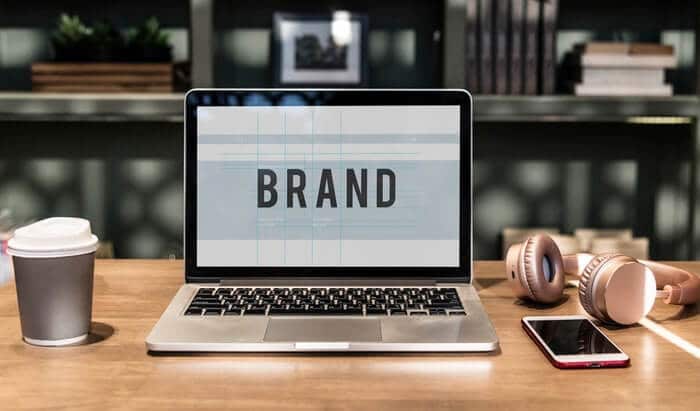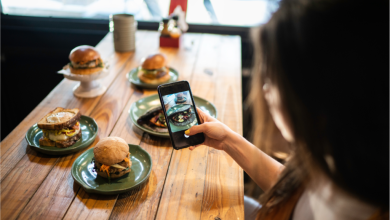BRAND DESIGN IN 6 STEPS; COMPLETE GUIDE BLOG

What is a brand design? And why do we or our businesses need it so badly? Have we ever given a thought while starting a business that there are dozens of aspects to consider? Like marketing, investment, expenses, hiring workers, facing losses but were come branding in our mind? Which can be a way of solving all your business-related problems. If you are hiring any brand design firm for your business branding and marketing or you are yourself trying to do your products or service’s branding yourself then this blog is only written for you for my friend.
But if you are not that trained or have enough information hiring a brand design firm could be a great idea for you. To stand out from this tremendous competition in the market and sell your products. Even though some surveys have discovered that 59% of the people say that they feel safe to buy the product from brands who relate to them and other 21% of them buy from anywhere but when it is from a brand, they appreciate it more.
It is not true, not only marketing specialists do all the branding jobs. If any professional designer gets to know this, they will answer you that this is not right. Branding includes your design, themes, and logos which visualize your representation and increase the credibility in front of customers which helps them associate easily with your brand.
6 STEPS of BRAND DESIGN:
Although, effective branding is dependent not only on the aesthetic qualities of brand pieces but also on subtleties such as the message and emotional appeal that stand behind them. To build a strong brand identity, designers must delve deeply into the intricacies of business goals as well as to conduct market and target audience research. We’ve broken down the branding process into six key steps that designers must go through when creating a brand.
-
STEP 1: DEFINED BUSINESS GOALS
it is not a designer who determines a company’s aims or defines its identity, but it is the cornerstone of the entire branding process. To achieve the desired results, the company must establish priorities and values from the start so that the branding team knows which path to take. Labels do not have to be specified and employed over the whole life cycle of a brand. The goals might be changed later in the creative process, but certain guidelines must be established at the outset.
Anyhow, any brand design firm would like to know what message the company wants to convey through its brand. it is as if you are drawing a portrait without a live person, you can do the work but it will not have that actual feel. The same goes for branding. If customers are not provided details about their brand character at least they can provide 4 – 5 accurate keywords that describe their brand description properly. For e.g.: if it is kid’s toys brands, keywords can be “fun, colors, superheroes, fictions, non-breakable, soft and stuffed and so on.”
-
STEP 2: MARKET RESEARCH
After getting to know the brand from the owner itself it is time to search the markets. This step is needed in any kind of profession or project. The study assists in immersing oneself in the environment of the future brand and comprehending the characteristics that may impact its success.
Every Brand design firm goes for the market research and dig the information for potential and existing competitors in the market. If you are thinking that designers do this to copy, no it is not like that. Searching about your competitors eliminates all the designs and ideas existing already, and helps you to create something else and unique to stand out completely distinct.
Research also helps understand deeply customers’ behavioral choices and the psychology behind buying any product or availing services. Your brand design will fail badly if you only rely on beauty and enhancement.
-
STEP 3: LOGO DESIGN
While the brand design is your company’s image logo is your brand’s face. people identify your brand suddenly, only if, your logo is that creative and significant enough to stick on people’s minds. The research part also helps in creating logos that delete the possibilities of plagiarizing someone else’s theme, design, or color preference.
-
STEP 4: BRAND’S VISUAL ELEMENT
The logo is not only a visual element for the brand but an important one. brand design firms usually seek methods to personalize a brand, and designers have a solution. Mascots are custom-designed figures that are used to represent a brand symbolically. They can be designed as part of a logo or as a standalone brand piece. Like nothing else, such personalities can develop a relationship with users.
A mascot is a tool for communication and engagement with users, assisting in the delivery of a message in an unexpected way. People begin to regard a mascot as a significant representation of a firm exposing them to a product or service. The effective mascot ensures a brand’s recognizability and memorability and quickly catches consumers’ attention.
Typography is another example of a brand’s visual element. Many logos are also made typographic. Fonts play a significant role in brand design; designers even customize different types of fonts for many brands.
-
STEP 5: CORPORATE BRANDING STYLE
After all of the work is done, a brand design firm when designing your brand. They also consider designing different important aspects that make your business look professional. Essentials like, business cards, billboards and banners design, vehicle branding, garment designing and corresponds. These aspects are commonly used for brand recognition and are all designed by brand design firms.
-
STEP 6: STYLE GUIDE; IT IS IMPORTANT!
After getting all the branding work done, you hand over the work to the customers. (If you are a firm, not you designing yourself). Firms provide this guide just to instruct the client on how to use all the elements properly. Of course, they do not want to see their effort flushing down to the water is in the wrong hands.




